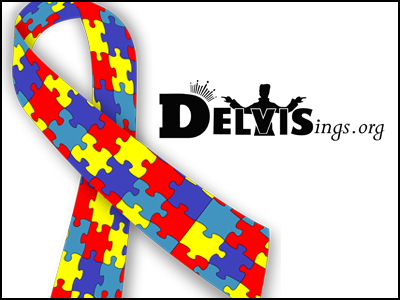Autism is a neurodevelopmental disorder characterized by impaired social interaction, verbal and non-verbal communication, and restricted and repetitive behavior. Parents usually notice signs in the first two years of their child’s life. These signs often develop gradually, though some children with autism reach their developmental milestones at a normal pace and then regress. The diagnostic criteria require that symptoms become apparent in early childhood, typically before age three.
While autism is highly heritable, researchers suspect both environmental and genetic factors as causes. In rare cases, autism is strongly associated with agents that cause birth defects. Controversies surround other proposed environmental causes; for example, the vaccine hypotheses have been disproven. Autism affects information processing in the brain by altering how nerve cells and their synapses connect and organize; how this occurs is not well understood. In the DSM V it is one of three recognized disorders in the autism spectrum (ASDs), the other two being Asperger syndrome, which lacks delays in cognitive development and language, and pervasive developmental disorder, not otherwise specified (commonly abbreviated as PDD-NOS), which is diagnosed when the full set of criteria for autism or Asperger syndrome are not met.
Early speech or behavioral interventions can help children with autism gain self-care, social, and communication skills. Although there is no known cure, there have been reported cases of children who recovered. Not many children with autism live independently after reaching adulthood, though some become successful. An autistic culture has developed, with some individuals seeking a cure and others believing autism should be accepted as a difference and not treated as a disorder.
Globally, autism is estimated to affect 21.7 million people as of 2013. As of 2010, the number of people affected is estimated at about 1–2 per 1,000 worldwide. It occurs four to five times more often in boys than girls. About 1.5% of children in the United States (one in 68) are diagnosed with ASD as of 2014, a 30% increase from one in 88 in 2012. The rate of autism among adults aged 18 years and over in the United Kingdom is 1.1%. The number of people diagnosed has been increasing dramatically since the 1980s, partly due to changes in diagnostic practice and government-subsidized financial incentives for named diagnoses; the question of whether actual rates have increased is unresolved.
Autism is a highly variable neurodevelopmental disorder that first appears during infancy or childhood, and generally follows a steady course without remission. People with autism may be severely impaired in some respects but normal, or even superior, in others. Overt symptoms gradually begin after the age of six months, become established by age two or three years, and tend to continue through adulthood, although often in more muted form. It is distinguished not by a single symptom, but by a characteristic triad of symptoms: impairments in social interaction; impairments in communication; and restricted interests and repetitive behavior. Other aspects, such as atypical eating, are also common but are not essential for diagnosis. Autism’s individual symptoms occur in the general population and appear not to associate highly, without a sharp line separating pathologically severe from common traits.

